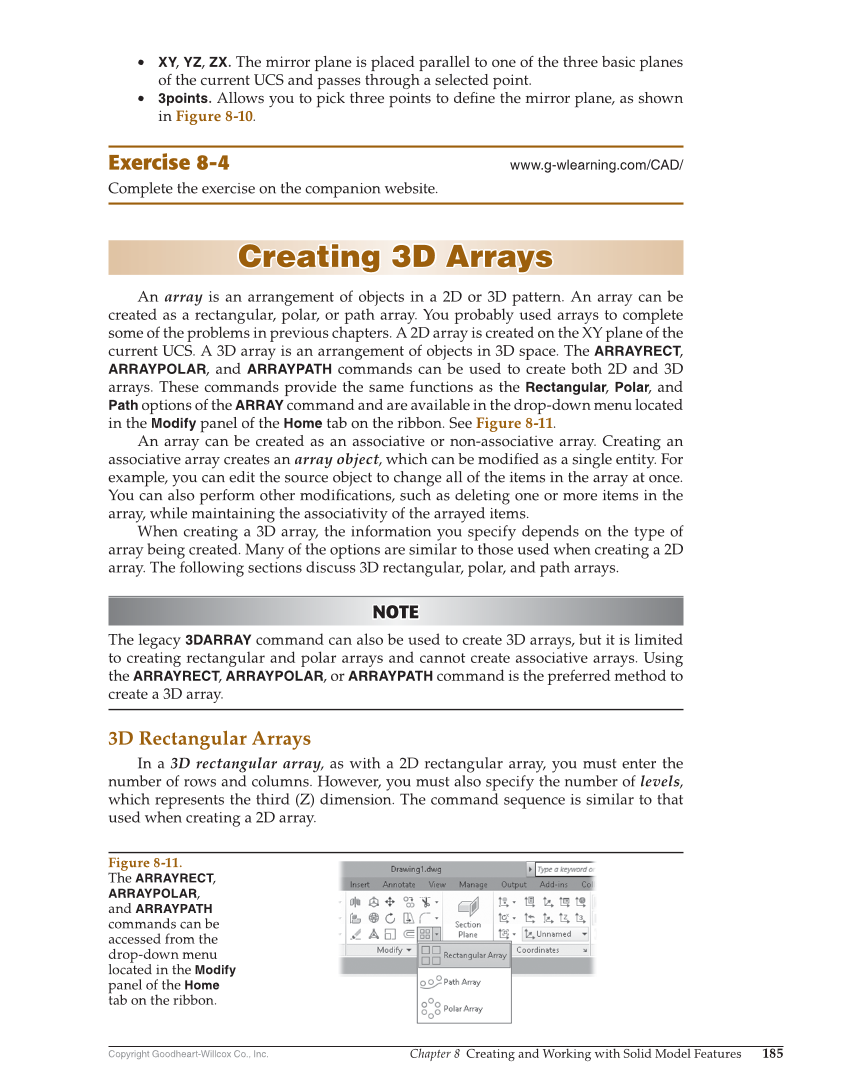Copyright Goodheart-Willcox Co., Inc. Chapter 8 Creating and Working with Solid Model Features 185 • XY, YZ, ZX. The mirror plane is placed parallel to one of the three basic planes of the current UCS and passes through a selected point. • 3points. Allows you to pick three points to defi ne the mirror plane, as shown in Figure 8-10. Exercise 8-4 www.g-wlearning.com/CAD/ Complete the exercise on the companion website. Creating 3D Arrays Creating 3D Arrays An array is an arrangement of objects in a 2D or 3D pattern. An array can be created as a rectangular, polar, or path array. You probably used arrays to complete some of the problems in previous chapters. A 2D array is created on the XY plane of the current UCS. A 3D array is an arrangement of objects in 3D space. The ARRAYRECT, ARRAYPOLAR, and ARRAYPATH commands can be used to create both 2D and 3D arrays. These commands provide the same functions as the Rectangular, Polar, and Path options of the ARRAY command and are available in the drop-down menu located in the Modify panel of the Home tab on the ribbon. See Figure 8-11. An array can be created as an associative or non-associative array. Creating an associative array creates an array object, which can be modifi ed as a single entity. For example, you can edit the source object to change all of the items in the array at once. You can also perform other modifi cations, such as deleting one or more items in the array, while maintaining the associativity of the arrayed items. When creating a 3D array, the information you specify depends on the type of array being created. Many of the options are similar to those used when creating a 2D array. The following sections discuss 3D rectangular, polar, and path arrays. NOTE NOTE The legacy 3DARRAY command can also be used to create 3D arrays, but it is limited to creating rectangular and polar arrays and cannot create associative arrays. Using the ARRAYRECT, ARRAYPOLAR, or ARRAYPATH command is the preferred method to create a 3D array. 3D Rectangular Arrays In a 3D rectangular array, as with a 2D rectangular array, you must enter the number of rows and columns. However, you must also specify the number of levels, which represents the third (Z) dimension. The command sequence is similar to that used when creating a 2D array. Figure 8-11. The ARRAYRECT, ARRAYPOLAR, and ARRAYPATH commands can be accessed from the drop-down menu located in the Modify panel of the Home tab on the ribbon.
